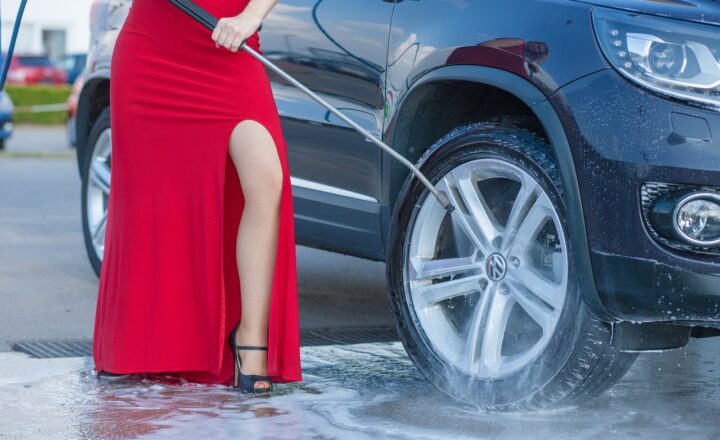How to Troubleshoot Electrical Issues in Your Car: Tips for DIY Fixes
November 13, 2024

Car electrical issues can often be daunting, mainly because the intricate web of wires, connectors, and electrical components can seem overwhelming. However, you don’t have to be a mechanic or an electrical engineer to troubleshoot and even fix many electrical problems in your vehicle yourself.
In this comprehensive guide, we’ll walk through some common electrical issues, how to troubleshoot them, and tips for DIY fixes, helping you to save money and gain confidence in your car maintenance skills.
1. Understanding Your Car’s Electrical System
Every vehicle has a complex electrical system that controls various components, from the engine management system to the lighting and entertainment features. Understanding the basics of how your car’s electrical system works helps you diagnose issues more effectively. Here’s a quick breakdown of key components:
- Battery: Supplies electrical power to the ignition system, lights, and accessories.
- Alternator: Charges the battery while the engine runs and powers electrical systems.
- Fuses: Protect electrical circuits; if a fuse blows, it can indicate a short or overload.
- Wiring Harness: A network of wires connecting various components, susceptible to damage and corrosion.
- Relays and Switches: Control and direct electrical flow; a faulty relay can prevent systems from operating properly.
Familiarizing yourself with these parts will aid in identifying and fixing problems.
2. Common Electrical Problems in Cars
Here are some typical electrical issues you may encounter while driving your vehicle:
- Dead Battery: Symptoms include dim lights and a vehicle that won’t start.
Fix: Jump-starting or replacing the battery if it’s faulty. - Blown Fuses: If specific components stop working, like lights or radio.
Fix: Inspect and replace any blown fuses with the correct amperage rating. - Alternator Issues: Signs include warning lights lighting up and dimming headlights.
Fix: Test the alternator’s output with a multimeter and replace if necessary. - Bad Wiring Connections: Common in older cars, leading to intermittent problems.
Fix: Inspect wires for corrosion and tighten loose connections. - Malfunctioning Lights: Headlights or indicators not working.
Fix: Replace bulbs and check the associated wiring and fuses.
By being aware of these common issues, you can more easily diagnose problems when they arise.
3. Safety Precautions Before Troubleshooting
Before you dive into any electrical troubleshooting, follow these safety precautions:
- Always disconnect the battery before working on electrical components to prevent shocks or short circuits.
- Use insulated tools to reduce the risk of electrical shock.
- Wear safety goggles to protect your eyes from sparks and debris.
- Work in a well-ventilated area to avoid inhaling any harmful fumes, especially if you’re working with batteries.
Taking these precautions ensures your safety and the longevity of your vehicle’s components.
4. Step-by-Step Troubleshooting Guide
Follow these steps to troubleshoot electrical issues in your car:
- Step 1: Identify the Problem
Log all symptoms you are experiencing, such as failure to start, blown fuses, or light issues. This information helps pinpoint the root cause. - Step 2: Check the Battery
Use a multimeter to ensure your battery has over 12.6 volts. If not, attempt a jump-start or check for corrosion on terminals. Clean them if necessary. - Step 3: Inspect Fuses
Locate the fuse box (usually under the dashboard or in the engine compartment) and visually check for blown fuses. If needed, replace them with the correct rating.
Tip: If a fuse blows again after replacement, there’s likely an underlying electrical issue that requires further investigation. - Step 4: Test the Alternator
Start the car and check the voltage at the battery terminals. It should read between 13.7 to 14.7 volts. If lower, your alternator may be underperforming or failing. - Step 5: Examine Wiring and Connections
Inspect visible wiring for frays, corrosion, or damaged insulation. Ensure all connectors are secure and free from rust or dirt.
Tip: If you’re dealing with complex wiring, consider obtaining a wiring diagram for your specific vehicle model for reference. - Step 6: Check Components Individually
After checking the battery, fuses, and wiring, focus on individual components like lights, relays, and switches, testing and replacing as necessary.
Following these steps allows you to systematically approach and resolve the electrical issues your vehicle may face.
5. DIY Fixes for Common Electrical Issues
Many electrical problems can be fixed with basic tools and some DIY skills. Here are a few solutions for common issues:
- Dead Battery: If your battery is dead but still usable, try jump-starting. If it’s old (over 3-5 years), consider replacement. Keep jumper cables in your trunk for emergencies.
- Blown Fuses: Simply replace the blown fuse with a new one of the same amperage that can be purchased online or at auto parts stores.
- Corroded Connectors: Use a wire brush or sandpaper to clean corroded battery terminals or connectors, ensuring good contact.
- Faulty Lights: For non-functioning lights, replace simple bulbs yourself or check for a faulty relay that may need replacement.
- Weak or No Start Issue: Make sure your battery cables are tight and corrosion-free, and check connections to the starter motor. If everything looks good but the vehicle won’t start, consider testing the starter more thoroughly or consulting a professional.
By applying these DIY fixes, you can address many common car electrical issues without the need for a mechanic.
6. When to Seek Professional Help
While many electrical problems can be resolved DIY-style, there are instances when it’s best to consult a professional:
- If you’re experiencing complex issues involving multiple electrical systems that require diagnostic expertise.
- When replacing major components like the alternator or starter, which may necessitate specialized knowledge.
- If you’re uncertain about safety practices or lack the tools for the job.
In these cases, consulting a skilled technician can save you time, money, and avoid potential hazards.
Conclusion
Troubleshooting electrical issues in your car doesn’t have to be an intimidating task. With a fundamental understanding of your vehicle’s electrical system, awareness of common issues, and a methodical approach to DIY fixes, you can save time and money while enhancing your automotive knowledge.
Now that you know what to look for and how to perform some repairs, take the initiative to keep your car in top shape, ensuring it remains reliable for all your travels. Begin your hands-on journey into car maintenance today, and enjoy the confidence that comes with being able to solve electrical issues on your own.





